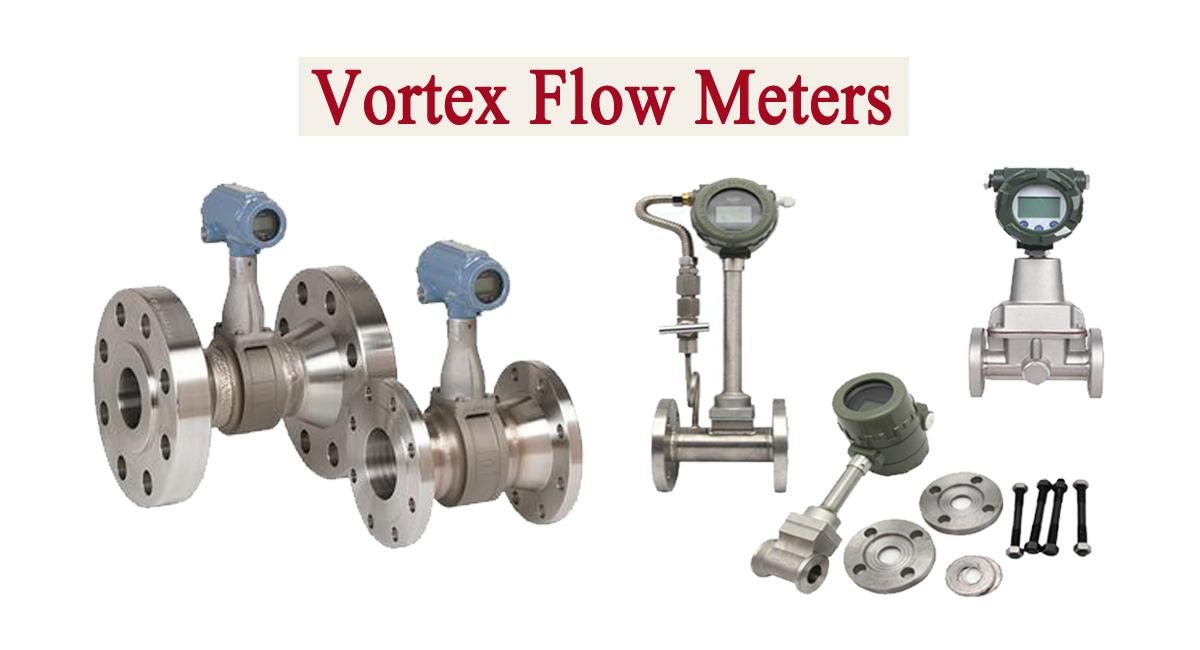A vortex flow meter is a type of flow meter that measures various kinds of fluids such as gases, liquids, and steam using frequency vortices produced by a shedder bar or a bluff body. They are usually the first subject choice to verify the requirement cover for a specific application.
The generation of vortices occurs from a specific velocity onwards to the cut-off point, when the vortex meter has an elevated zero. The meter output gets cut to zero before the rate becomes zero. When the flow is at the cut-off point, the output signal will be produced by the meter, leading to an incorrect interpretation.
Like orifice meters, vortex flow meters are actual volume flow meters since they are intrusive; hence, they can lead to pressure drop due to an increase in the flow, thus causing a permanent loss. There can be an introduction of cavitation by liquids near their boiling point when a pressure drop across the meter and below the liquids’ vapor pressure.
The bubbles disunite immediately when the pressure recovers above the vapor pressure. It would help if you avoided cavitation since it can lead to the malfunctioning of the vortex flow meter.
The Principle of Vortex Flow meter
There is always the production of vortices when the fluid flows with a specific velocity through a very fixed obstruction. The process is usually known as Karman’s vortices. The frequency of the liquid is directly proportional to the air velocity when a stretched wire starts to vibrate in airflow.
The shape and width of the bluff body usually determine the vortex shedding frequency, which is a direct linear function of the fluid velocity. The pressure loss gradient across the vortex flow meter usually has the same shape as with the orifice flow meter. The pressures’ lowest point is always at the bluff body, and it recovers gradually, leading to permanent loss of pressure.
There is always a restriction on the maximum diameter of the vortex flowmeter since it can lead to a resolution that may, in turn, cause a control purpose problem. Due to this problem, it is always advisable for one to use onboard digital multipliers to help multiply the frequency of the vortices without adding any error.
The frequency sensing principle
There is always the building of piezo- electrical pairs inside the bluff body or the shedder bar. Like the piezo crystals, the shedder bar is subjected to forces alternating due to the shedding frequency.
Also, a pair capacitance sensor variable is built inside the shedder bar. Accordingly, the capacitors change their capacitance when the shedder bar is subject to alternating micro-movements due to forces from frequency shedding.
Factors Influencing the performance of a vortex flow meter
i)The upstream piping corrosion
ii) Erosion as a result of shedder bar geometry change.
iii) Insecurity of the shedder bar, making it change position.
iv) The shedder bar geometry changes leading to deposits like wax.
v) Noise hydraulics.
Electronic parts of the vortex flow meter
i) AC- amplifier
ii) Pick-up elements
iii) AC- pre amplifiers
iv) Schmitt trigger
v) Noise abatement features
vi) Microprocessor
Features of vortex flow meter
1. A vortex flow meter does not have any moving parts. It makes minor subject to wear and tear hence does not require frequent maintenance.
2. It is reliable and costs less to install since it lacks valves that may leak; hence you can even use them in hazardous applications.
3. It gives a linear output signal without utilizing separate transmitters to simplify the equipment’s installation. The operating condition usually determines the flow range despite good accuracy in many flow ranges.
4. The shedding frequency function helps in ensuring good, long repeatability and stability of calibration better than the rate of positive or negative 0.15%.
5. Increase in the pipe diameter leads to a decrease in the number of pulses given out per unit volume in the cube law.
Advantages of vortex flow meter
1. A vortex flow meter requires low maintenance and installation costs.
2. It can regulate the flow rate of steam, gases, and liquids.
3. It has long-term repeatability and accuracy stability.
4. It lacks moving parts hence not subjected to wear and tear.
5. It can be suitable for a wide range of process temperatures.
6. In process conditions, it has a low variation sensitivity.
7. One can employ many different pipe sizes.
Disadvantages of vortex flow meter
1. It requires a minimum of straight pipe on the flow downstream and upstream.
2. It is not applicable in meager flow rates.
Applications of vortex flow
1. A vortex flow meter is used in the measurement of steam.
2. It is used in pharmaceutical and liquid chemical industries.
3. It is used in the metering of natural gas in custody transfer.
4. It is used in general applications of water.
5. It is suitable for liquid flow suspensions.
Conclusion
A vortex flow meter is one of the suitable flow meters for measuring gases, liquids, and steam. It does not need frequent maintenance since it lacks moving parts.
Author Bio
Naman Modi is a Professional Blogger, SEO Expert & Guest blogger at proteusind.com, He is an Award-Winning Freelancer & Web Entrepreneur helping new entrepreneur’s launches their first successful online business.



